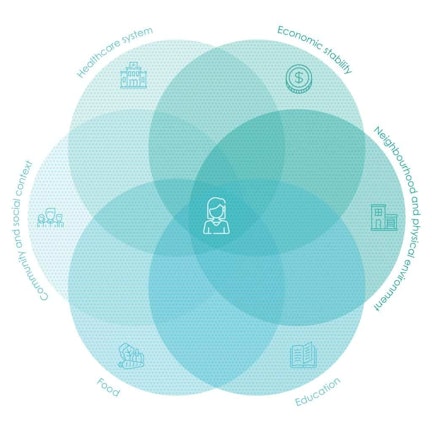
IN THE NEW ERA OF SUSTAINABILITY IN HEALTH, HANNAH WESLEY SAYS BRANDS NEED TO MOVE FROM SICK-CARE TO HEALTHCARE
There is little question that the current US healthcare system is unsustainable. With its traditional focus on sickness (vs wellness), overwhelming paperwork and high-cost care, even middle-class insured consumers can find themselves one health crisis away from bankruptcy, while doctors struggle with burnout and bureaucracy.
To stay sustainable, we in the healthcare industry need to lean into the holistic and preventative wellness approaches being embraced by brands, health systems and politicians alike. Brands that interact with a patient only once they become sick will soon be left behind. At TBWA, we’re helping our clients navigate this shifting landscape and champion disruptive new approaches that will reshape their categories forever.
In 2016, US healthcare costs for chronic diseases totaled $1.1tn. Nearly 900,000 individuals in the US die annually from heart disease, cancer, chronic respiratory disease, stroke and injury. The Centers for Disease Control and Prevention estimates that 20–40% of these deaths are preventable, largely through behavior modification and a focus on healthier lifestyles.
Emerging trends in wellness are shifting the lens through which we view illness. Rather than engaging with a patient once they become ill, these approaches are taking a more holistic view – interacting with consumers throughout their lives in order to prevent catastrophic and emergency events in the first place.

Social determinants of health
This trend has been echoed in social movements, advancements in health tech and political will in legislation, which has implications for both small businesses and large industry players. Nearly 60% of an individual’s life expectancy is determined outside of a doctor’s office. An understanding of the social determinants of health (SDoH)4 – the social, economic and environmental factors that contribute to an individual’s health outcomes – has become less of an academic exercise and more of a guiding principle for those working in the healthcare industry.
Brands and healthcare providers are taking a variety of approaches to creating sustainable models of care: harnessing the power of technology; organizational design and restructuring; and leaning into more non-traditional business models and unique partnerships.
Brands have an exciting opportunity to become partners throughout consumers’ lives
CVS Health’s platform, Destination: Health, allows healthcare workers to make electronic referrals for non-clinical services such as rides and meals that address SDoH within their clinical workflow. It also hosts an analytics tool that enables businesses and insurers – in this case, Aetna – to better understand the connection between SDoH and productivity, ultimately allowing for possible adjustments to policies and benefits that most support employees. Key partnerships and collaborations are allowing companies to harness the power of innovation and ‘start-up’ approaches (and funding) to disrupt markets in order to appeal to a wider audience.

© Xeris Pharmaceuticals, Inc.
Of course, not all illnesses can be avoided by addressing SDoH and following a preventative care approach. Brands can embrace sustainable approaches in the design of treatments and medications that reduce catastrophic cost to both consumers and the system. A great example is Xeris’ ground-breaking Gvoke Pre-Filled Syringe™ which delivers pre-mixed, pre-measured liquid glucagon, indicated for severe hypoglycaemia in adults and kids with diabetes. “Innovations in this space,” says Rebecca Bechily, Xeris’ Director of Marketing, “may mean more people – patients and caregivers – could have the confidence to address hypoglycaemic events as they happen and potentially reduce associated healthcare resource utilization.”
The common denominator in much of what we’re seeing is an on-demand, bespoke approach to healthcare – one that strives to meet consumers often before they would seek care themselves and addresses the underlying causes of disease with as much rigor as the disease itself. Brands have an exciting opportunity to reach beyond talking to patients strictly in the context of their treatment, and to become partners throughout consumers’ lives. In the era of die-versification – where brands either ‘diversify traditional offerings or die’ – this shift has become less about innovation. It’s now vital for brand sustainability.








